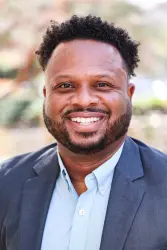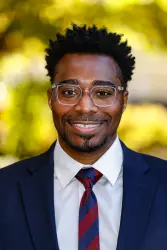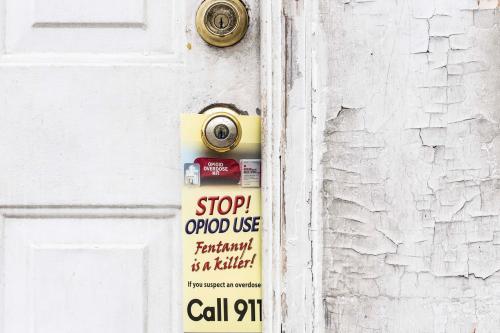Police reform is redefining political accountability for local decision-making across America. In Atlanta, the opening of Cop City, an 85-acre policing facility with a $115 million price tag, marks a pivotal moment in the city’s evolving approach to public safety. Officially known as the Atlanta Public Safety Training Center, Cop City represents the use of advanced technology in the professionalization of policing. Yet, some view it as a symbol of ignoring community demands to irradicate symbols, actions, and claiming of lands to perpetuate state violence and no investment in social needs.
Failed police reform efforts in Atlanta, similar to those in other U.S. cities, erode both the community’s trust and its tolerance for police brutality. Many questions remain unanswered about what is supporting and stifling police reform across the United States. We use Cop City as an example of setbacks to community-driven police reform strategies in the country. We also discuss the implications of how cities should address the social needs of communities as a primary strategy to police reform to mitigate health consequences of police violence for three of the most populous Black cities in the U.S.
The systemic criminalization of communities of color and their exposure to police violence in U.S. cities is well documented. Many urban areas, including New York City, Philadelphia, Atlanta, St. Louis, and Baltimore, have been shaped by these forces. Community stakeholders have adopted civil tactics to illustrate that urban infrastructures that once disrupted Black communities are now sites of protest, such as planned highway stoppages. Advocates for police reform have faced antidemocratic actions from Atlanta politicians, who have escalated violence against protesters, responding to environmental activists with riot gear, domestic terrorism charges, and excessive force.
Atlanta and Cop City
As a steadily rising global hub for political activists and sports fanatics alike, Atlanta’s approach to injury prevention prioritizes organized policing over community-centered solutions. Cop City is located on an unincorporated portion of DeKalb County nested between racially segregated communities with stark socioeconomic differences. The placement of Cop City on the historic Old Prison Farm raises questions about local politicians’ awareness of community concerns and histories. Repurposing a former prison farm for advanced police training has drawn criticism as tone-deaf. The site’s location has heightened controversy over the project and attracted opposition from various interest groups.
West of Cop City are poorer neighborhoods long stigmatized by the presence of major criminal legal institutions, including the maximum-security Atlanta U.S. Penitentiary and the Georgia Army National Guard. To the north, gentrifying areas like Summerhill, home to a stadium district, enjoy the efficiency of proximity to schools, jobs, and leisure—a benefit granted by generations of early access to wealth. East of Cop City, Black middle-class suburbs such as Decatur reflect political and economic progress born from a bootstrapped ethos of independence. To the south, factories and warehouses support the logistical operations of Hartsfield-Jackson Atlanta International Airport. Yet, the communities southeast of Cop City tell the paradoxical story of the Weelaunee Forest. It is home to one of Atlanta’s largest remaining green spaces and home to one of its most heterogenous Black communities. While some subdivisions feature sprawling homes and manicured lawns, others tower with trees that conceal byroads where the county’s electrical grid and sewer water treatment facility meet.
The four sides of Cop City highlight Atlanta’s complex social landscape, where wealth and disadvantage intersect with racial and class segregation in distinct ways.
These communities are not Black suburban ghettos. Rather, they present new strategies Black families are using to secure their own futures. Black youth in Atlanta already face neighborhood deprivation challenges born from underfunded public schools, environmental pollution, and wealth depreciation. The spatial dynamics around Cop City reveal how systemic racism shapes New Urbanism projects, often reinforced through police surveillance.
What health and public safety means to communities
As Cop City was taking shape, we were interviewing stakeholders in Baltimore and St. Louis about police reform efforts. As professors in each of these cities, we recognized the similarities among them as places with large Black populations, high segregation, and public police brutality incidents. In interesting ways, our interviews with community leaders, police officers, and elected officials in Baltimore and St. Louis demonstrate how a facility like Cop City can be antithetical to the goals of reducing police brutality and improving safe environments. A St. Louis stakeholder noted, “Safety isn’t just about policing—it’s about the systems that keep people out of harm’s way. Housing, jobs, health—that’s public safety.” Similarly, a Baltimore stakeholder echoed, “Policing doesn’t operate in a vacuum. It’s tied to every other system that determines how people live—or don’t.”
However, some police officers view public safety narrowly, prioritizing law enforcement control to prevent injury. Atlanta’s Cop City approaches public safety through a “broken door” model rather than a public health framework. This mindset contributed to the fatal police response to Rayshard Brooks’ mental health crisis in South Atlanta. Community stakeholders in St. Louis and Baltimore insist that these tactics damage police-community relations by sidelining community engagement. A St. Louis stakeholder expressed frustration, saying, “Public safety starts with housing and mental health, not more police.” A Baltimore stakeholder emphasized, “If you can’t trust the process, you can’t trust the outcome. Communities deserve to know where decisions are coming from.”
Granting police greater authority and control over injury prevention excludes communities from decision-making processes around how to redress social conditions that impair well-being. Stakeholders’ comments align with the escalation of unrest over the lack of transparency regarding how Atlanta’s Cop City came to be. Atlanta’s politicians failed to bring the Stop Cop City referendum to the ballot box in November 2024.
Atlanta is not a blueprint for public safety reform. That blueprint will depend on whether local politicians hold themselves accountable for how they invest taxpayer dollars. Atlanta’s City Council has chosen to support internal militarization. The following questions are crucial for advocacy across municipalities:
- Will American cities build systems of public safety that address the root causes of inequity? Or, have these public safety systems entered an irreparable police state?
- Where are the community voices in shaping public safety and police reform?
- How can public safety integrate and be guided by goals of antiracism and health equity?
The suburbanized Black Mecca provides the Atlanta City Council with many ideas for securing community health. For instance, the incorporation of Stonecrest in DeKalb County and South Fulton in Fulton County leverages the secessional politics of the cityhood movement, driven by Black self-governance in racially segregated areas with concentrated extremes of income. The rise of multiethnic leadership in Gwinnett County reveals how coalitional politics can gain traction. Other efforts focus on enhancing institutions, such as the restoration of the Morris Brown College, the City of East Point’s investment in Black entrepreneurship, and the transformation of Fort McPherson (a former Confederate Army Base), by Tyler Perry Studios. These communities offer visions of public safety that do not rely heavily on policing.
Overall, communities are calling for solutions to the housing and mental health crises—not a 30-year contract that diverts an additional $36 million in taxpayer funds away from essential resources.
The Brookings Institution is committed to quality, independence, and impact.
We are supported by a diverse array of funders. In line with our values and policies, each Brookings publication represents the sole views of its author(s).









Commentary
Is Atlanta’s Cop City the answer to public safety?
January 31, 2025